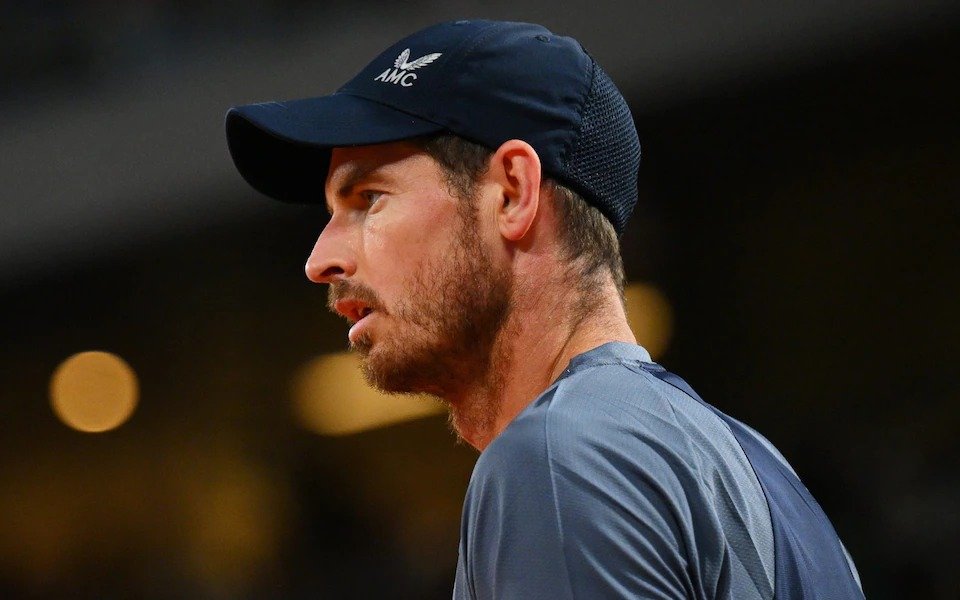
Andy Murray, the celebrated British tennis star and three-time Grand Slam champion, recently expressed his deep frustration and disappointment over the decision to scrap plans for his proposed ‘legacy’ tennis center in Scotland.

This project, which Murray had envisioned as a way to give back to his home country and nurture the next generation of tennis talent, was set to be a state-of-the-art facility.
However, due to a lack of support from both the Scottish government and the Lawn Tennis Association (LTA), the project was abruptly canceled, prompting Murray to publicly criticize these institutions for what he perceived as a failure to invest in the future of Scottish tennis.
Murray’s vision for the tennis center was rooted in his desire to create a lasting impact on the sport in Scotland, a country with a rich history but limited infrastructure for developing world-class players.
The facility was meant to serve as a training ground for aspiring tennis players, providing them with the resources and coaching necessary to reach the highest levels of the sport. Additionally, it was designed to be a community hub, offering programs for players of all ages and skill levels, and promoting a healthy, active lifestyle.
The project was particularly significant to Murray on a personal level. Throughout his career, he has often spoken about the challenges he faced growing up in Scotland, where tennis infrastructure was limited and opportunities to train at a high level were scarce.
Murray’s success on the global stage, including his victories at Wimbledon and the US Open, as well as his two Olympic gold medals, was achieved despite these obstacles.
As one of the greatest tennis players of his generation, Murray wanted to ensure that future Scottish players would have access to better facilities and opportunities than he had.
However, the ambitious project ran into significant roadblocks, primarily due to a lack of financial and logistical support from the Scottish government and the LTA.
Despite Murray’s efforts to rally support for the center, both institutions were reportedly unwilling to commit the necessary funding and resources to bring the project to fruition.
The LTA, the governing body for tennis in Britain, has often been criticized for its perceived lack of investment in grassroots and regional development, and this situation seemed to reinforce those concerns.
Murray’s frustration with the situation boiled over when the plans for the tennis center were officially scrapped.
In a series of candid interviews and statements, he did not hold back in expressing his disappointment with the Scottish government and the LTA. Murray accused both parties of failing to recognize the importance of investing in the future of Scottish tennis and criticized them for their lack of vision and commitment.
He argued that the decision to cancel the project was not only a setback for tennis in Scotland but also a missed opportunity to inspire and develop future generations of athletes.
The scrapping of the tennis center also highlighted broader issues within the UK’s approach to sports development.
Murray’s criticisms pointed to a systemic problem where short-term thinking and financial constraints often take precedence over long-term investments in infrastructure and grassroots programs.
For Murray, the cancellation of the project was emblematic of a failure to capitalize on the success of players like himself, who have brought unprecedented attention to British tennis.
Murray’s disappointment was shared by many within the tennis community, who saw the proposed center as a vital step towards improving the sport’s infrastructure in Scotland.
The lack of a top-tier training facility in the country has long been a point of contention, and the cancellation of the project was seen as a significant setback.
Critics argued that the Scottish government and the LTA should have done more to support the initiative, especially given Murray’s contributions to the sport and his status as a national icon.
The decision to scrap the tennis center also raised questions about the priorities of the Scottish government and the LTA.
While both institutions have spoken about the importance of promoting sports and physical activity, their unwillingness to back a project of this magnitude suggested a disconnect between their stated goals and their actions.
For Murray, this disconnect was particularly frustrating, as he had hoped that his success would translate into tangible benefits for the next generation of Scottish players.
In the wake of the decision, Murray’s criticism extended beyond just the cancellation of the project. He also expressed concerns about the overall state of tennis development in the UK, particularly in regions like Scotland that have historically received less attention and funding.
Murray has long been an advocate for greater investment in grassroots tennis, and the cancellation of the tennis center only strengthened his resolve to push for change within the sport’s governing bodies.
Despite the setback, Murray has indicated that he remains committed to supporting tennis in Scotland in any way he can.
He has spoken about exploring other avenues to help develop young talent, whether through smaller-scale projects or by working with existing programs and facilities.
However, the cancellation of the tennis center represents a significant missed opportunity, not just for Scottish tennis but for the broader goal of expanding access to the sport across the UK.
The situation also sparked a broader conversation about the legacy of successful athletes and the responsibilities of governing bodies to support their initiatives.
Murray’s attempt to establish a legacy through the tennis center was a way of giving back to the sport that had given him so much.
The lack of support from the Scottish government and the LTA, however, highlighted the challenges that athletes face when trying to translate their success into lasting change.
In conclusion, Andy Murray’s public criticism of the Scottish government and the LTA following the cancellation of his proposed tennis center underscores the challenges facing sports development in the UK.
The scrapping of the project not only disappointed Murray but also raised important questions about the priorities and vision of the institutions responsible for promoting and developing tennis in Scotland.
For Murray, the setback was deeply personal, as it represented a missed opportunity to create a lasting legacy and to inspire the next generation of Scottish tennis players. Despite this, Murray remains committed to supporting the sport and continues to advocate for greater investment in grassroots and regional development.
Leave a Reply